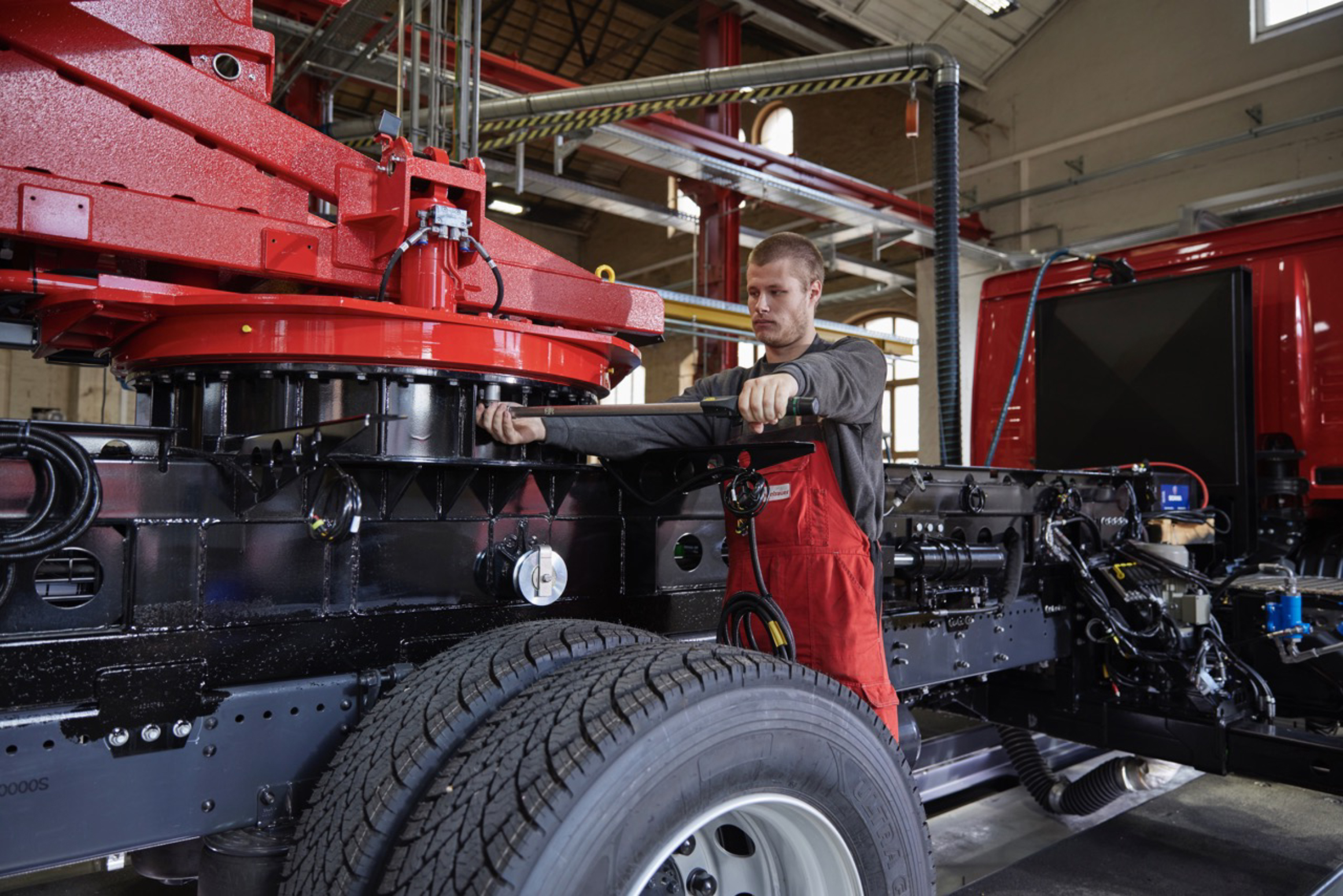04.06.2023
Rosenbauer focuses on innovation with wireless torque wrenches

Inhalt
Rosenbauer Karlsruhe GmbH & Co. KG in Karlsruhe, with their team of around 500 employees, produces more than 190 vehicles for fire departments and emergency services every year. This requires the highest level of quality and maximum reliability, because if there’s an emergency, the emergency services need to be able to rely 100% on the technology. In order to meet the increasing demands in future, Rosenbauer relies on our wireless electromechanical torque wrenches when manufacturing. These offer the advantage that they can be fully integrated into software-based worker guidance for assembly workstations. Above all, the digital documentation of bolted joints is fast, easy and automated.

01.
Process reliability thanks to the digitisation of the bolting processes
In Karlsruhe, the assembly of turntable ladders and aerial rescue platforms is characterised by many customised solutions and a high proportion of manual bolting processes. Numerous joints must be secured in a defined order, and with a precisely defined torque. In this process, each individual employee carries a great deal of responsibility in terms of self-control. An incorrectly tightened bolt can have an impact on the function of the entire system – with implications for warranty and claims costs.
The digitisation of the manufacturing processes remedies this by reliably guiding the user through predefined sequences and shortening the training time, thereby increasing process reliability. At the same time, the bolted joints can be easily, quickly and digitally documented. This enables Rosenbauer to provide its customers with demonstrable quality at a consistently high level, which is an important selling point. The decision to introduce the wireless torque wrench was made jointly with the production team. They were given the opportunity to work with the new technology in a multi-week project phase to test its practical usage.
02.
Full integration into the existing production environment
Rosenbauer now has three workstations at its Karlsruhe location and another in Italy that are equipped with the Manoskop 766 Daptiq torque wrench. This tool is the only one on the market that works electromechanically: it measures digitally, clicks mechanically, can be connected wirelessly, and can both receive and send data. “What our employees particularly appreciate about the wrench is the fact that it triggers with the typical click of its mechanical counterpart”, says Schuster. This is an important criterion in noisy production environments and on jobs where the optical display on the wrench may be hidden.
At Rosenbauer, the torque wrenches are directly integrated into the ProTight worker guidance system. When an assembly process is started, the tool receives its data from the worker guidance software wirelessly and the torque required in each case is set automatically. For Rosenbauer in Karlsruhe specifically, the display of the tightening sequence and the location of the bolt to be tightened are shown visually on a large-format monitor at the workstation. The wrench signals in three ways whether the bolted joint has been correctly executed and the specified target torque has been reached – with an LED light, a digital indication on the display, and the familiar click. It also detects whether screws have been forgotten or tightened twice. Error messages cannot be ignored.
The result is reported back to ProTight in real time to ensure audit and loss protection, is documented with a time stamp and exact torque, and the results are displayed on the monitor at the workstation. This ensures complete traceability at all times. The Manoskop 766 communicates with ProTight via an OpenSource interface from STAHLWILLE. This makes it particularly easy to transfer and store data and make it available for evaluation.
03.
Low installation effort
The wrench was quickly integrated into Rosenbauer's existing system environment. It took about two days to set up the first station on-site. The time required for subsequent installations is significantly reduced because the system can be easily scaled. In many cases, it takes less than one working day. Moreover, once everything is installed, it runs automatically.
Training for new projects is easier and faster. The likelihood of operating errors and incorrectly executed bolted joints has been significantly reduced. Last but not least, digitised processes reduce the effort involved in creating and maintaining work instructions on paper.
Process reliability has increased significantly with the Stahlwille solution. At the same time, the workers have been relieved of many of their previous responsibilities and are freed from time-consuming administration tasks.
Torsten Schuster, Production Planner International at Rosenbauer Karlsruhe GmbH & Co. KG
We are particularly pleased that the employees in production prefer the use of STAHLWILLE torque tools in combination with process-controlled worker guidance and documentation to all other options when it comes to manually bolted joints, and even specifically ask for them when a new workstation is set up.
Service
2025© All Rights Reserved
